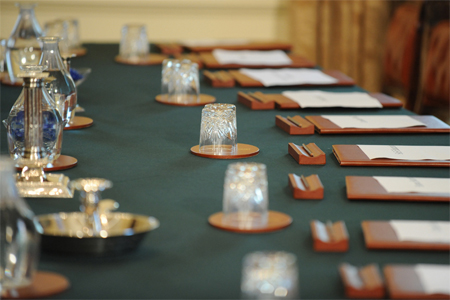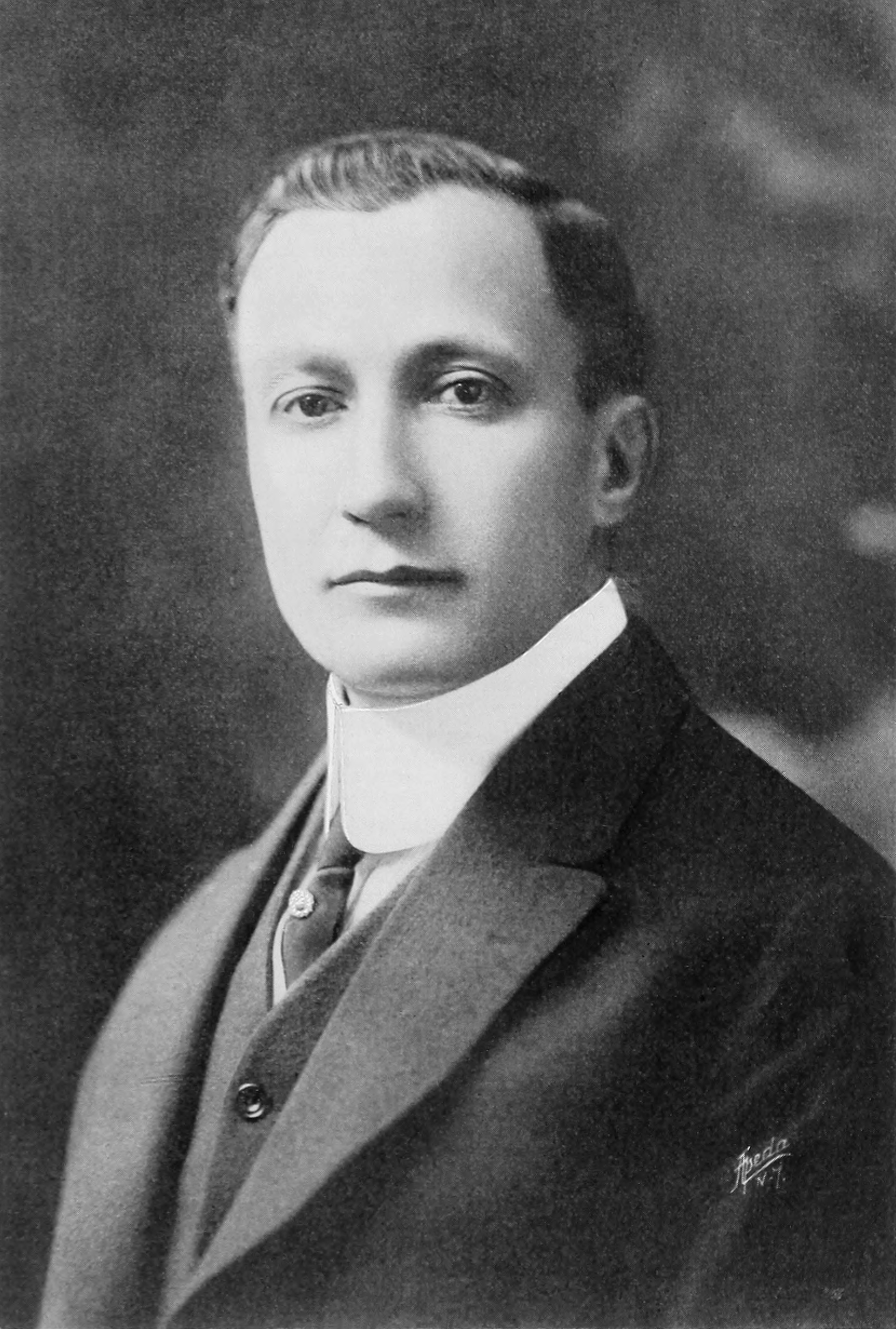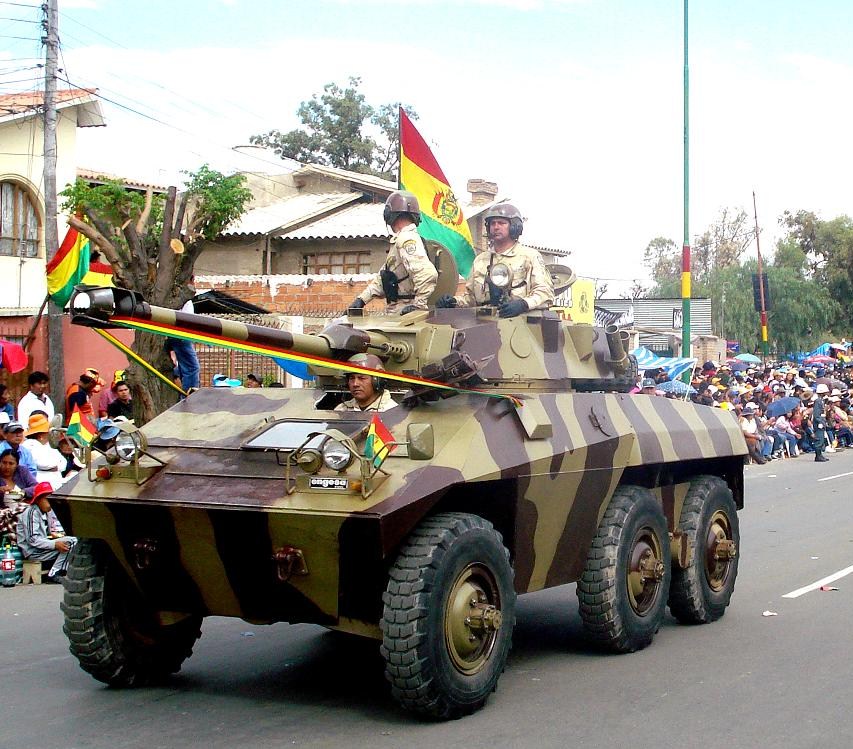|
Cabinet Of Tomás Frías I
The Frías I Cabinet constituted the 33rd cabinet of the Republic of Bolivia. It was formed on 28 November 1872 after Tomás Frías was sworn in as the 17th president of Bolivia following the assassination of Agustín Morales, succeeding the Morales Cabinet. It was dissolved on 9 May 1873 upon the end of Frías' mandate and was succeeded by the Cabinet of Adolfo Ballivián. Composition History Upon his assumption to office, Frías ratified all ministerial portfolios in their present positions. No changes to the cabinet originally formed by Agustín Morales occurred until 27 January 1837 when, due to the resignation of Casimiro Corral, a minor reshuffle took place with Minister of Justice Melchor Terrazas being appointed to replace Corral while Vice President of the Council of State Juan de Dios Bosque Juan de Dios Bosque y Ventura Farfán (12 March 1829 – 9 March 1890) was a Bolivian prelate of the Catholic Church and politician who served as the acting president o ... [...More Info...] [...Related Items...] OR: [Wikipedia] [Google] [Baidu] |
President Of Bolivia
The president of Bolivia (), officially known as the president of the Plurinational State of Bolivia (), is head of state and head of government of Bolivia and the captain general of the Armed Forces of Bolivia. According to the Bolivian Constitution, the president is elected by popular vote to a five-year term with no limit on the number of terms a president may serve. If no candidate wins a majority (defined as either more than 50%, or alternatively at least 40% and at least 10% more than the second-place candidate), the top two candidates advance to a runoff election. Luis Arce is the 67th and incumbent president of Bolivia. He assumed office on 8 November 2020. Constitutional history Establishment On 6 August 1825, the Republic of Bolivia declared its independence and proclaimed Simón Bolívar head of state. While it is certainly true that Bolívar was the official ruler of the country starting from his arrival on 12 August, there exists conflict amongst schol ... [...More Info...] [...Related Items...] OR: [Wikipedia] [Google] [Baidu] |
Ildefonso Sanjinés
Ildefonso Sanjinés Rada (12 June 1812 – 2 December 1882) was a Bolivians, Bolivian Officer (armed forces), military officer who served as Minister of War twice during the presidencies of Agustín Morales, Tomás Frías, and Adolfo Ballivián. Sanjinés served during the War of the Confederation and the Peruvian-Bolivian War of 1841-1842, fighting valiantly during the Battle of Ingavi. Early life He was born in the city of La Paz in 1812, the son of José Mariano Calderón de la Barca Sanjinés and Petrona de Rada. He entered the army as a cadet in the 10th battalion of the ''Guardia'' at the age of fourteen. In December 1831, he was promoted to second lieutenant and took part in almost all the battles of the War of the Confederation. Military career At the battle of Yanacocha, he fought heroically at the head of a company, earning him the rank of captain. Having been a part of the battles of Socabaya, Iruya, and Battle of Montenegro, Montenegro, he eventually reached the ... [...More Info...] [...Related Items...] OR: [Wikipedia] [Google] [Baidu] |
Cabinets Of Bolivia
A cabinet in governing is a group of people with the constitutional or legal task to rule a country or state, or advise a head of state, usually from the executive branch. Their members are known as ministers and secretaries and they are often appointed by either heads of state or government. Cabinets are typically the body responsible for the day-to-day management of the government and response to sudden events, whereas the legislative and judicial branches work in a measured pace, in sessions according to lengthy procedures. The function of a cabinet varies: in some countries, it is a collegiate decision-making body with collective responsibility, while in others it may function either as a purely advisory body or an assisting institution to a decision-making head of state or head of government. In some countries, particularly those that use a parliamentary system (e.g., the United Kingdom), the cabinet collectively decides the government's direction, especially in reg ... [...More Info...] [...Related Items...] OR: [Wikipedia] [Google] [Baidu] |
1873 Disestablishments In Bolivia
Events January * January 1 ** Japanese calendar, Japan adopts the Gregorian calendar. ** The California Penal Code goes into effect. * January 17 – American Indian Wars: Modoc War: First Battle of the Stronghold – Modoc Indians defeat the United States Army. February * February 11 – The Spanish Cortes Generales, Cortes deposes King Amadeo I of Spain, Amadeus I, and proclaims the First Spanish Republic. * February 12 ** Emilio Castelar, the former foreign minister, becomes prime minister of the new Spanish Republic. ** The Coinage Act of 1873 in the United States is signed into law by President Ulysses S. Grant. Coming into effect on April 1, it ends bimetallism in the U.S., and places the country on the gold standard. * February 20 ** The University of California opens its first medical school in San Francisco. ** British naval officer John Moresby discovers the site of Port Moresby in Papua New Guinea, and claims the land for Britain. March * March 3 &nda ... [...More Info...] [...Related Items...] OR: [Wikipedia] [Google] [Baidu] |
1872 Establishments In Bolivia
Year 187 ( CLXXXVII) was a common year starting on Sunday of the Julian calendar. At the time, it was known as the Year of the Consulship of Quintius and Aelianus (or, less frequently, year 940 ''Ab urbe condita''). The denomination 187 for this year has been used since the early medieval period, when the Anno Domini calendar era became the prevalent method in Europe for naming years. Events By place Roman Empire * Septimius Severus marries Julia Domna (age 17), a Syrian princess, at Lugdunum (modern-day Lyon). She is the youngest daughter of high-priest Julius Bassianus – a descendant of the Royal House of Emesa. Her elder sister is Julia Maesa. * Clodius Albinus defeats the Chatti, a highly organized German tribe that controlled the area that includes the Black Forest. By topic Religion * Olympianus succeeds Pertinax as bishop of Byzantium (until 198). Births * Cao Pi, Chinese emperor of the Cao Wei state (d. 226) * Gu Shao, Chinese official and politici ... [...More Info...] [...Related Items...] OR: [Wikipedia] [Google] [Baidu] |
La Paz
La Paz, officially Nuestra Señora de La Paz (Aymara language, Aymara: Chuqi Yapu ), is the seat of government of the Bolivia, Plurinational State of Bolivia. With 755,732 residents as of 2024, La Paz is the List of Bolivian cities by population, third-most populous city in Bolivia. Its metropolitan area, which is formed by La Paz, El Alto, Achocalla Municipality, Achocalla, Viacha Municipality, Viacha, and Mecapaca Municipality, Mecapaca makes up the second most populous urban area in Bolivia, with a population of 2.2 million, after Santa Cruz de la Sierra with a population of 2.3 million. It is also the capital of the La Paz Department, Bolivia, La Paz Department. The city, in west-central Bolivia southeast of Lake Titicaca, is set in a canyon created by the Choqueyapu River. It is in a bowl-like depression, part of the Amazon basin, surrounded by the high mountains of the Altiplano. Overlooking the city is the triple-peaked Illimani. Its peaks are always snow-cove ... [...More Info...] [...Related Items...] OR: [Wikipedia] [Google] [Baidu] |
Bishop
A bishop is an ordained member of the clergy who is entrusted with a position of Episcopal polity, authority and oversight in a religious institution. In Christianity, bishops are normally responsible for the governance and administration of dioceses. The role or office of the bishop is called episcopacy or the episcopate. Organisationally, several Christian denominations utilise ecclesiastical structures that call for the position of bishops, while other denominations have dispensed with this office, seeing it as a symbol of power. Bishops have also exercised political authority within their dioceses. Traditionally, bishops claim apostolic succession, a direct historical lineage dating back to the original Twelve Apostles or Saint Paul. The bishops are by doctrine understood as those who possess the full Priest#Christianity, priesthood given by Jesus in Christianity, Jesus Christ, and therefore may ordain other clergy, including other bishops. A person ordained as a deacon, pri ... [...More Info...] [...Related Items...] OR: [Wikipedia] [Google] [Baidu] |
Juan De Dios Bosque
Juan de Dios Bosque y Ventura Farfán (12 March 1829 – 9 March 1890) was a Bolivian prelate of the Catholic Church and politician who served as the acting president of Bolivia from the night of 27 November to 28 November 1873. He was preceded in this office by Agustín Morales and succeeded by Tomás Frías. Early life Juan de Dios Bosque was born on 12 March 1829. His exact place of birth is unclear. The generally accepted story is that he was born in Sorata, Larecaja Province. However, others claim that he was born in either Aukapata or Ayata in the Muñecas Province and that as a baby he was later moved to Sorata. A third story states that Bosque was born in a town near Sorata, currently called Obispo Bosque. Bosque studied at the College of Arts and Sciences in La Paz before returning to Sorata to continue his studies at the Seminary College, where he obtained a Doctor of Theology, doctorate in theology. After that, he graduated as a lawyer from the Higher University of ... [...More Info...] [...Related Items...] OR: [Wikipedia] [Google] [Baidu] |
Ministry Of Justice And Institutional Transparency (Bolivia)
The Ministry of Justice and Institutional Transparency of Bolivia () is in charge of the justice sector of Bolivia. In addition. the ministry includes the following vice-ministries: * Justice and Fundamental Rights * Indigenous Peasant Native Justice * Equal Opportunities * Defense of User and Consumer Rights * Institutional Transparency and Fight against Corruption The ministry has gone by several names. For instance, in 2017, the Ministry of Institutional Transparency and Fight Against Corruption and the Ministry of Justice were merged by Supreme Decree 3058—thereby becoming the Ministry of Justice and Institutional Transparency. List of ministers ''This list is incomplete, as it only shows the ministers who served post-1966.'' Minister of Government, Justice & Immigration / Minister of Interior, Migration & Justice / Minister of Interior / Minister of Interior, Immigration & Justice * Antonio Arguedas Mendieta (1966–1968) * Eufronio Padillacaere (1969) * Juan Ayoroa ( ... [...More Info...] [...Related Items...] OR: [Wikipedia] [Google] [Baidu] |
Ministry Of Economy And Public Finance (Bolivia)
The Ministry of Economy and Public Finance () is a cabinet ministry of the government of Bolivia responsible for overseeing the nation's public finances and responsible for formulating and implementing macroeconomic policies that preserve stability and promote economic and social equity. Ministers of Finance *Alberto Crespo Gutiérrez, 1941– ? *Víctor Paz Estenssoro, 1943–1946 * Edmundo Valencia Ibanez, 1969–1970 * Antonio Sánchez de Lozada, 1970 * Flavio Machicado Saravia, 1970–1971 * Raúl Lema Peláez, 1971 * Edwin Rodríguez Aguirre, 1971–1972 * Luis Bedregal Rodo, 1972–1973 * Armando Pinell Centellas, 1973 * Jaime Quiroga Mattos, 1973–1974 * Victor Castillo Suárez, 1974–1976 * Carlos Calvo Galindo, 1976–1977 * David Blanco Zabala, 1977–1978 * Jorge Tamayo Ramos, 1978 * Wenceslao Albo Quiroz, 1978–1979 * Guido Hinojosa Cardozo, 1979 * Javier Alcoreza Melgarejo, 1979 * Agapito Feliciano Monzon, 1979 * Augusto Cuádros Sánchez, 1979–1980 * Adolfo ... [...More Info...] [...Related Items...] OR: [Wikipedia] [Google] [Baidu] |
Armed Forces Of Bolivia
The Bolivian Armed Forces (Spanish: ''Fuerzas Armadas de Bolivia'') are the military of Bolivia. The Armed Forces of Bolivia are responsible for the defence, both of external and internal, of Bolivia and they are constituted by Bolivian Army, the Bolivian Air Force and the Bolivian Navy. All these institutions depend on the Ministry of Defence of this country. In addition to the Bolivian Army, the Bolivian Air Force and the Bolivian Navy, the Bolivian National Police, although dependent on the Ministry of Government in times of peace, is part of the reserves of the Armed Forces according to the Organic Law of the Armed Forces of this nation, together with other reserve bodies such as the SAR-FAB emergency and rescue units. Figures on the size and composition of the armed forces of Bolivia vary considerably, with rare official data available. It is estimated, however, that the three main forces (army, navy and air force) add up to a total of between 40,000 to 70,000 troops, whil ... [...More Info...] [...Related Items...] OR: [Wikipedia] [Google] [Baidu] |
Ministry Of Defense (Bolivia)
Council of Ministers of Bolivia, or Cabinet of Bolivia, is part of the executive branch of the Bolivian government, consisting of the heads of the variable number of government ministries. The Council of Ministers are ministers of state and conduct the day-to-day business of public administration within Bolivia. The President of Bolivia may freely reorganize the executive branch, with the most recent comprehensive reorganization occurring in February 2009. 7 February 2009. Since then, the Ministry for the Legal Defense of the State has become the independent office of Solicitor General, and the Ministry of Communication has been created. Current Cabinet Resources [...More Info...] [...Related Items...] OR: [Wikipedia] [Google] [Baidu] |






